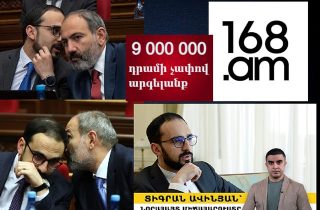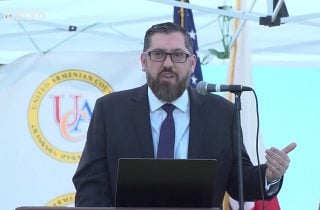Armenian astronomer has been awarded to NASA Lifetime Achievement Award
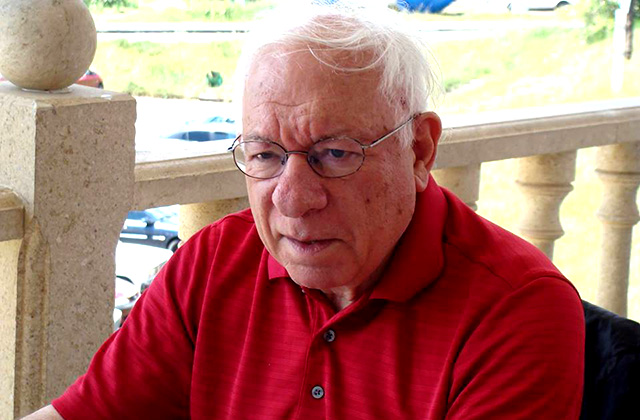
Prof. Terzian, the David C. Duncan Professor in the Physical Sciences, Department of Astronomy, Cornell University, was awarded to NASA Lifetime Achievement Award. He is one of the prominent modern astronomers, known in the fields of physics of the interstellar medium, planetary nebulae, galaxies, radio astronomy, and others. He is one of the ArAS Co-Presidents and the Chairman of the Research Council of ANSEF.
Yervant Terzian was born on February 9, 1939, in Alexandria, Egypt. His father was an Armenian and his mother, a Greek; hence, having Armenian-Greek origin, Terzian is considered both as a great Armenian and Greek astronomer. He finished the Kalousdian Armenian School in Cairo, then studied at the American University also in Cairo, and in 1960, he received the B.Sc. from the Physics/Mathematics Department of this University. Then he moved to the USA and in 1963 he received his M.Sc. and later on, in 1965, his Ph.D. degrees in Astronomy from the Indiana University.
Since 1965, Terzian’s research and teaching is connected to the Cornell University, Ithaca, NY. In 1965-1967, he was a research associate at the Arecibo Observatory, Puerto Rico; in 1967-1972: Assistant Professor of Astronomy; in 1968-1974: Assistant Director of the Center for Radiophysics and Space Research of the same University; in 1972-1977: Associate Professor of Astronomy; in 1973-1974: Visiting Professor of Astronomy at the University of Montreal, Canada; in 1974 (Feb-July): Visiting Professor of Astronomy at the University of Thessaloniki, Greece; in 1974-1979: Graduate Faculty Representative, Astronomy and Space Sciences, Cornell University; and since 1977 he is Professor of Astronomy at Cornell University.
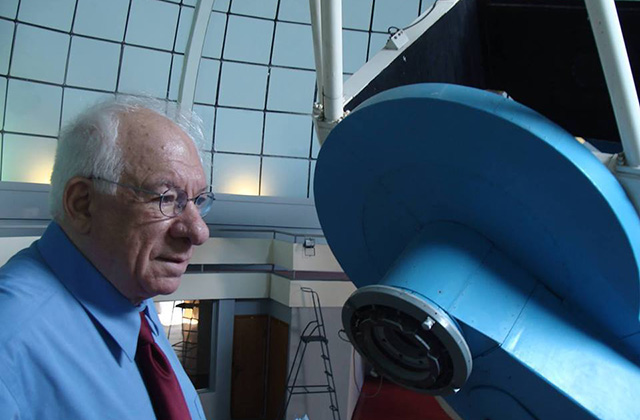
Prof. Terzian’s scientific fields are quite broad: from planetary nebulae (PNe) and pulsars to galaxy pairs and quasars. His studies have been carried out mainly in radio, however many papers are devoted to IR, optical, and UV observations as well. Among his largest studies and most important results one would mention:
1965-1988, Radio observations of PNe (together with a few other colleagues). Observations at various radio wavelengths were carried out, as well as radio spectra were taken. Radio recombination lines from PNe were studied. 13 papers were published in Astrophysical Journal (ApJ), Astronomical Journal (AJ), Astronomy & Astrophysics (A&A), and other journals.
1965-1994, Radio observations of Galactic emission nebula / HII regions (with a few other colleagues). Study of the electron temperatures of the Orion Nebula and some other Galactic nebulae. High resolution observations of fine structures, etc. 25 papers were published in ApJ, AJ, A&A, Astrophysics & Space Science (ApSS), Publications of the Astronomical Society of the Pacific (PASP), and Vistas in Astronomy.
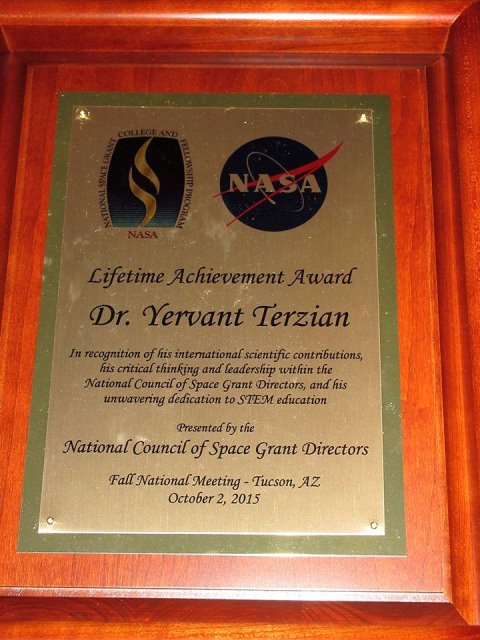
1967-1986, Study of the radio emission of normal spiral galaxies, including radio observations of M31 and M33 (with a few other colleagues, including H.M. Tovmassian). 10 publications in ApJ, AJ, and PASP.
1969-1995, Radio observations and studies of pulsars (with K. Davidson and other colleagues). An analysis of the pulsar dispersion measures was made to investigate the distribution of pulsar and interstellar electron densities. Another paper (together with D.M. Sedrakian, et al.) was devoted to the superfluid core rotation in pulsars. 6 papers were published in ApJ, AJ, A&A, ApSS, and Nature.
1969-1997, Optical studies of PNe (with B. Balick, A.R. Hajian, S.E. Schneider, et al.). Many-sided optical studies of PNe, including their reddening curves, radial velocities, etc. 10 papers were published in ApJ, AJ, A&A, and ApSS,.
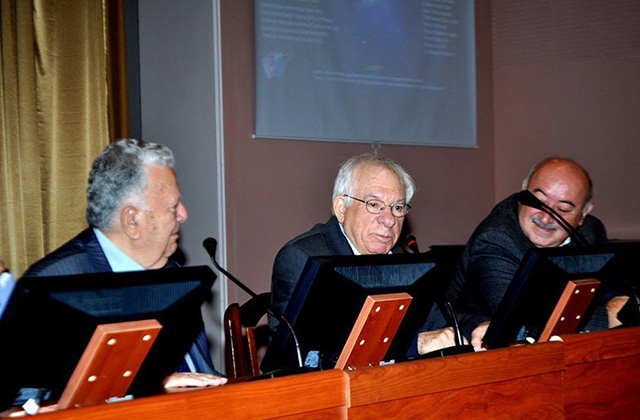
1970-1990, Study of the neutral hydrogen (HI) and molecular clouds (with J.M. Dickey, E.E. Salpeter, H.E. Payne, S.W.J. Colgan, et al.). Radio observations of interstellar and intergalactic HI, CO, and OH clouds. 22 publications in ApJ, ApJ Supplement Series (ApJSS), AJ, A&A, PASP, and Radio Science.
1972, Expected infrared spectra from planetary nebulae (with D.B. Sanders). Based on the analysis of the radiation of PNe, their expected IR spectra were discussed. A paper was published in AJ.
1973, Optical Atlas of Galactic Supernova Remnants (with S. van den Bergh and A.P. Marscher). Published in ApJSS (vol. 26, p. 19).
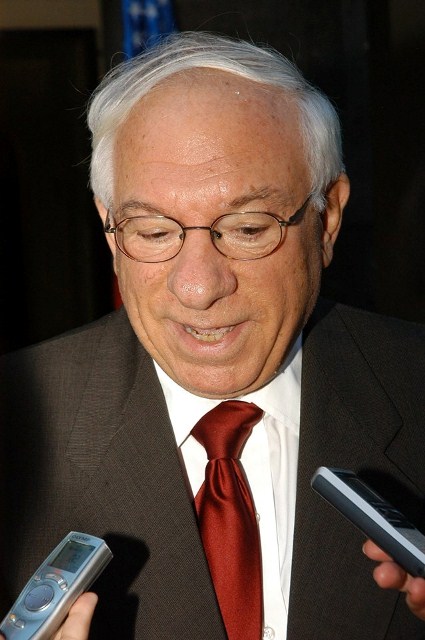
1974, Detection of radio emission from some Markarian galaxies at 430 MHz (with H.M. Tovmassian). The results were published in PASP.
1974-1984, High resolution radio observations of PNe (with B. Balick and others). Radio synthesis and Arecibo interferometer observations were carried out for search for sub-arcsecond structure in compact PNe. Three papers were published in ApJ and AJ.
1977-1979, Radio observations of globular clusters and radio sources in the direction of globular clusters (with a few other colleagues). Two papers were published in AJ.
1979-2000, Study of galaxy pairs (with T.E. Nordgren, J.N. Chengalur, E.E. Salpeter, et al.). HI observations; the distribution of galaxy pair redshifts; close and wide galaxy pairs in the North and South. Compilation of the 1 Mpc Galaxy Pair Sample in low-density regions. 8 papers published in ApJ, ApJSS, ApSS, and Journal of the Royal Astronomical Society of Canada (JRASC).
1981-1982, VLBI observations of galactic nuclei (with D.L. Jones and R.A. Sramek). 6cm VLBI observations of 15 galactic nuclei. Spectra of compact radio sources in the galactic nuclei. 2 publications in ApJ.
1982, Detection of radio emission from cometary nebulae (with K.C. Turner). An investigation of cometary nebulae at radio wavelengths was conducted: 48 objects in the declination range of the Arecibo telescope were observed at 12cm and 21cm, and 10 of them showed detectable radio emission. The results were published in ApJ.
1986-2004, Search and study of OH/IR stars (with B.M. Lewis, J. Eder, et al.). The Arecibo OH survey (1612 MHz observations) of 571 OH/IR stars identified by IRAS colors; 132 were detected. 2MASS counterparts for OH/IR stars were identified. 12 publications in ApJ, ApJSS, ApSS, Monthly Notices of the Royal Astronomical Society (MNRAS), PASP, and Nature.
1988, Detection of continuum radio emission from Virgo galaxies (with K.C. Turner and G. Helou). Single-antenna measurements of radio emission from 120 galaxies in the Virgo cluster at 2380 MHz, as well as interferometric measurements at the same frequency for 48 galaxies with 1 resolution. It was found that the disk emission dominates in most cases. Indications that the flux concentration was greater in E/S0 than in S. The results were published in PASP.
1991, Two-component velocity system model of PNe (with G.A. Gurzadyan). Phenomena were discussed in the behavior of the expansion velocities of PNe and a possible explanation was suggested, namely that PNe originate from two distinct types of progenitor stars. A paper was published in AJ.
1993-1996, Study of the dynamics of binary galaxies (with J.N. Chengalur and E.E. Salpeter). Study of high resolution HI synthesis data (radio maps) and CCD images of wide and close pairs; galaxy pairs, redshift catalogs, and the cosmic peculiar velocity. 4 papers published in ApJ and AJ.
1993-1998, Fast, low-ionization emission regions (FLIERs) and other microstructures in PNe (with B. Balick, A.R. Hajian, M. Perinotto, et al.). High spatial resolution Palomar Observatory 5m telescope long-slit observations and Hubble Space Telescope (HST) Wide Field Planetary Camera 2 imaging studies of “FLIERs” and other microstructures in a number of bright PNe were performed. Four papers were published in ApJ and AJ.
1993-2002, Planetary nebulae expansion distances (with A.R. Hajian, C. Bignell, et al.). VLA 6cm two-epoch observations were carried out to measure accurate expansion parallax distances to planetary nebulae. On the other hand, HST measurements were used for the same purpose. Six papers were published in AJ and PASP.
1995-2006, The morphology and kinematics of Markarian galaxies with double and multiple nuclei (with T.E. Nordgren, G. Helou, J.N. Chengalur, E.Ye. Khachikian, et al.). Basic data and preliminary analysis for 16 Markarian galaxies observed with the Palomar Observatory 5m telescopes were given. 2 publications in ApJSS and MNRAS.
1999, The sample of IR planetary nebulae in the NVSS (with J.J.Condon and D.L. Kaplan). A cross-correlation of IRAS sources having colors characteristic of PNe with the 1.4 GHz NRAO VLA Sky Survey sources was made and 454 sources were selected as candidate PNe. 122 new PNe were revealed among them. The sample was published in the ApJSS.
2007, Atlas of [NII] and [OIII] Images and Spectra of PNe (with A.R. Hajian, et al.). An atlas of HST images and ground-based, long-slit, narrowband spectra centered on the [NII] 6584A and the [OIII] 5007A lines. Basic parameters for the subsample of PNe that present ellipsoidal appearances and regular kinematic patterns were derived. The Atlas was published in ApJSS.
Other studies related to radio observations of extragalactic sources (quasars and radiogalaxies), X-ray sources, comets, evolution of the radio luminosities of the Tycho and Kepler SNR, etc.
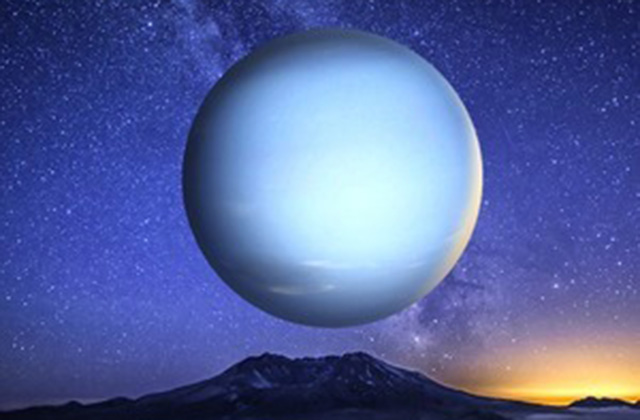
In 1968, Terzian was appointed the Vice-Chairman, and in 1979, the Chairman of the Department of Astronomy at the Cornell University and headed this large (one of the largest and most important in the USA) department for 20 years! In 1979-80 and 1992-93 he was the Acting Director of the Center for Radiophysics and Space Research of the Cornell University.
Since 1986, Terzian is Professor in Graduate Field of History and Philosophy of Science and Technology, and since 1991, in Field of Science and Technology Studies, Cornell University. In 1988-1999 he was the Director of Pew Undergraduate Science Education Program, New York State Cluster of Colleges and Universities; in 1990-1999: James A. Weeks Professor of Physical Sciences, Cornell University. Since 1996, he is the Director of NASA’s New York State Space Grant Program (Cornell University) to enhance science education. In 1999-2000, he was a Visiting Professor, University of California, San Diego, and since 1999, David C. Duncan Professor in the Physical Sciences, Cornell University.
In 2002 Terzian was elected the Chairman of the US Consortium of Universities and Institutes to construct the Square Kilometer Array (SKA) giant radio telescope. Since 2001, he is the Chairman of the Research Council of the Armenian National Science and Education Fund (ANSEF).
Prof. Terzian has been the Associate Editor and the Scientific Editor of the Astrophysical Journal (1989-1999), one of the leading astronomical journals in the world. In 1982-1992 he was a member of the Editorial Advisory Board of The Encyclopedia of Astronomy and Astrophysics. Since 2000, Terzian is a member of the Editorial Board of Astrofizika.
Prof. Terzian is member of a number of professional societies and organizations: International Astronomical Union (IAU, 1967), International Union of Radio Science, American Astronomical Society (AAS), Armenian Astronomical Society (ArAS, 2001), Hellenic Astronomical Society (HelAS), Sigma Xi, Scientific Research Society, Astronomical Society of New York, Historical Astronomy Division, Society for Scientific Exploration, American Association for the Advancement of Science (Fellow, 2001). In 1990, he was elected Foreign Member of the Armenian National Academy of Sciences (NAS), and in 2002, Co-President of the Armenian Astronomical Society (ArAS).
Terzian’s organizational activities have been rather large: he has been chairman, vice-chairman, or member of numerous committees and commissions of the IAU Working Groups, US National Academy of Sciences, New York Astronomical Society, NASA, NSF, etc. and Scientific Organizing Committees (SOC) of a number of international (including IAU) symposia and conferences. He was the Chairman of the IAU Working Groups on Planetary Nebulae (1985-1994) and on Astronomy from the Moon (1993-1999).
For his research achievements and teaching merits Prof. Terzian has been awarded numerous titles, degrees, awards, medals, and honors, among which are: Honorary Doctor of Science degrees from the University of Indiana, USA (1989), the Yerevan State University, Armenia (1994), the University of Thessaloniki, Greece (1997), and the Union College, New York, USA (1999); the Clark Distinguished Award for Excellence in Teaching from Cornell University (1984); the Distinguished Alumni Award from the American University in Cairo (2004); the Dicran H. Kabakjian Award for Outstanding Achievement in Science, North American Armenian Student Association, Boston, MA (1985); Gold Medal, Ministry of Science and Education, Armenia (2008); and Viktor Ambartsumian Medal, Armenian National Academy of Sciences (2008).
Prof. Terzian is an author or co-author of 232 scientific publications and the editor of 6 books, including “Carl Sagan’s Universe” (1997). Out of these publications 164 are in refereed scientific journals, including papers in Nature, where only outstanding results are being accepted. According to the ADS database, during 1962-2008, there are altogether 315 publications by Terzian, many still possibly being missed.
We would like to mention two of the most important modern activities by Prof. Terzian that strongly support the development of the Armenian astronomy and science in general: his role in the creation and activities of ANSEF and ArAS.
The Armenian National Science and Education Fund (ANSEF) was established in 1999, in New York City, by a group of Armenian academic and other intellectuals, Yervant Terzian among them. ANSEF provides peer reviewed research awards to support scientific, technological and scholarly research. Since the beginning, ANSEF Research Council is chaired by Prof. Terzian. During 2001-2008, grants to about 200 projects have been awarded, USD 5000 to each. Altogether, more than 500 senior and junior scientists and scholars have benefited from this support. In the field of astronomy and astrophysics, ANSEF has supported 24 projects involving more than 60 scientists from BAO and Yerevan State University.
The Armenian Astronomical Society (ArAS) also was established in 1999, however officially registered in 2001. Since the beginning, Prof. Terzian was one of the initiators and active members of ArAS. In 2002, during the first annual meeting, there was a decision to have three Co-Presidents; Prof. Terzian was elected one of them and since then is an ArAS Co-President. He strongly supports the existence and activities of the Society and plays an important role in contacts between astronomers living in Armenia and abroad. In 2004, Terzian established the ArAS Annual Prize for Young Astronomers and since then sponsors it. Fourteen young scientists have received this prize, which we could call “Yervant Terzian prize”.
Sona FARMANYAN















